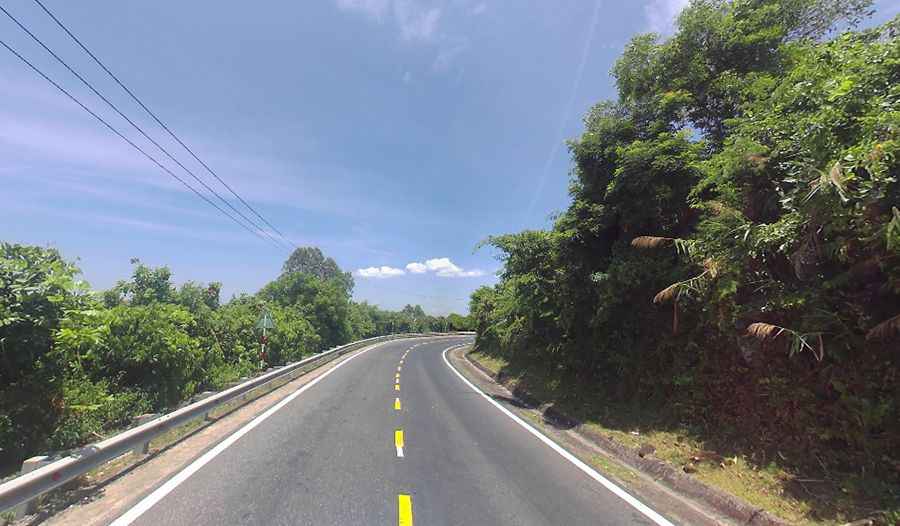The road to Hai Van Pass is a deserted ribbon of perfection in Vietnam
Hải Vân Pass is a mountain pass at an elevation of 481m (1,578ft) above sea level, located on the boundary between Thua Thien-Hue and Da Nang provinces of Vietnam. It is one of the most scenic hillside roads in Vietnam and a contender for the most famous road of the country.

Is Hải Vân Pass in Vietnam paved?
Set high in the Annamite Range, the road to the summit (The Pass of Ocean Mist), is totally paved. It’s called National Route 1A. This rugged pass, also called May pass, is the final section of the Truong Son Range stretching to the sea. After climbing through several hairpin curves for close to an hour, you reach the crest of the Hai Van Pass. It traditionally acted as a geographic boundary between the ancient kingdoms of Champa and Dai Viet and now it’s considered as the "bridge" between Danang city and Thua Thien Hue province. At this elevation it’s said to be Vietnam's highest pass.
Is the Hai Van Pass difficult?
The journey through this particular drive poses significant challenges due to the road's meandering path through the pass and the mist that originates from the nearby sea, lending it its eponymous quality. Traveling through the pass evokes two distinct emotions: awe when passing through the clouds and trepidation upon encountering the perilous bends of the road. The drive itself is quite steep, reaching gradients of up to 10% on certain ramps. The road's twisting nature, punctuated by sudden curves and blind spots, amplifies the danger for inexperienced riders.
During the dry season from April to July, the pass offers clear views of the sea, allowing for easy appreciation of the surrounding beauty. However, from August to December, increased rainfall and dense fog caused by the winter monsoon from the north create a more challenging environment. The weather becomes colder, and the road grows more slippery.
To enhance your ascent up the hill, it is advisable to rent a motorcycle with a sufficiently powerful engine. Riding alongside large trucks at the same speed can dampen the enjoyment of the journey. Fortunately, since the opening of the Hải Vân Tunnel in 2005, encountering other traffic on the pass has become less of an issue, contributing to a safer experience. Nonetheless, it's important to remember that driving in Vietnam always carries some level of risk.
Is the Hai Van Pass worth it?
Hai Van Pass is not only a major important role in the history of Vietnam but also as one of the most beautiful passes in Vietnam. It’s said to be one of the most beautiful stretch of pavement in the country. The twisting road along the pass is very scenic and offers a challenge for every driver. In the 2008 Hai Van Pass Top Gear episode, Jeremy Clarkson dubbed it a ‘deserted ribbon of perfection’. The road winds up and over a fortress of mountains. The drive offers an impressive landscape of verdant mountains and clear blue skies, overlooking Da Nang City, Tien Sa Port, Son Tra Peninsula, and South China Sea.
How long is Hải Vân Pass in Vietnam?
Tucked away in Central Vietnam, the road to the summit is 21.1 km (13.11 miles) long, running south-north from Da Nang to An Cu.